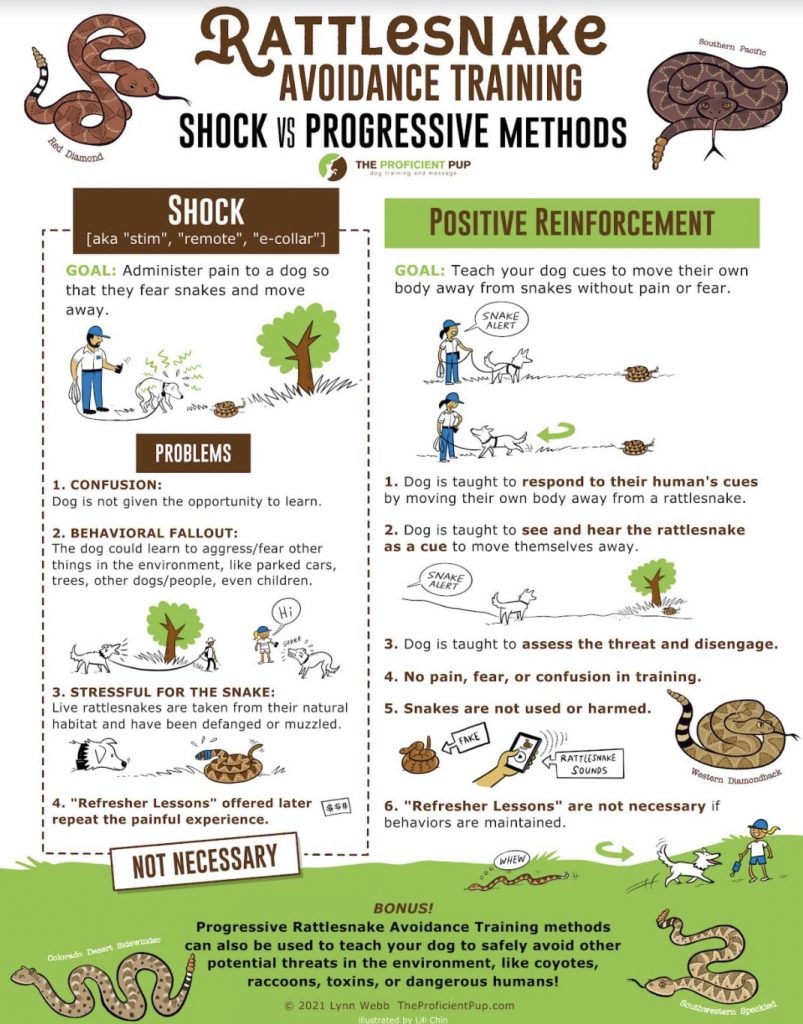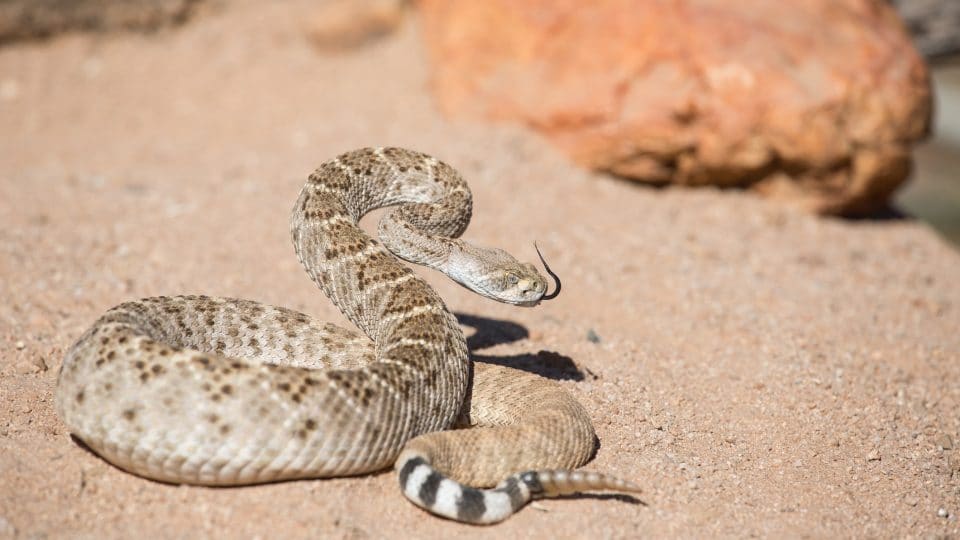A few years ago, I was on a horseback ride in Albuquerque, New Mexico. I stopped next to a bush, which began making a shaking noise I’d never heard before. My guide told me to move away—it was a rattlesnake. I moved immediately, but it got me thinking. My Boston Terrier wants to be everyone and every thing’s friend. He’s lived in the Midwest his entire life and, similar to me, has never seen (or heard) a rattlesnake. Had I been with him rather than a horse and a competent guide, that situation could have ended very differently.
Yet even for people and pets who live in rattlesnake country, an encounter with one often takes both humans and dogs by surprise, sometimes leading to unpleasant, even deadly, consequences.
View this post on Instagram
Argo the Vizsla with a rattlesnake bite to the face, courtesy argovizsla
Fortunately, there is a way to be better prepared, and it’s called “rattlesnake avoidance training.” It’s a training technique developed by dog trainer Lynn Webb to keep pets, people, and snakes safe during potential encounters. Webb teamed up with artist Lili Chin who illustrated how it works in the infographic below—read on for more details about how and why this training is so important.
What Is Rattlesnake Avoidance Training?
Rattlesnake Avoidance Training is a method taught by Webb to keep dogs safe from rattlesnakes—and to keep rattlesnakes safe from dogs. During training, dogs receive a verbal signal (something like “snake alert”) and then learn to respond to that signal. Owner participation is important: pet parents need to learn and use the verbal cue and practice various encounter scenarios in order to keep their dog away from the snake.

Courtesy Lili Chin
In-person training is available through Webb and her San Diego-based dog training company, The Proficient Pup, for $600. The training is offered in other cities as well, such as Tucson, Arizona and Fort Collins, Colorado. Capable home dog trainers may also learn about rattlesnake avoidance in this video by California-based dog trainer Pamela Johnson. Webb developed her rattlesnake avoidance curriculum based on Johnson’s positive reinforcement training techniques. It’s a better alternative to shock collars, Webb says, which some dog owners use to keep their pets away from threats and danger.
“I want the public to know that there is a way to keep dogs safe from rattlesnakes and other hazards that does not include traumatizing them,” Webb says. “Shocking dogs traumatizes them by creating fear, and that fear can be generalized to the entire environment, not just the snake. And fear does not always make an animal go away from something; it can draw them closer to the dangerous item. Many people would opt for better training, if they knew it existed.”
View this post on Instagram
Izzy with another rattlesnake bite to the face, courtesy anni_martini
Why Is Rattlesnake Avoidance for Dogs Important?
Once your dog is bitten by a rattler, you need to get them to emergency care immediately. You pet may not die from the injury, but it’s a very real possibility.
“There is something called a dry bite, which means the rattlesnake did not inject any venom,” says Webb. “But there is no way to know if the rattlesnake did or did not inject venom until symptoms begin, and by then it might be too late for that dog—depending on the size and age of the dog; where on the body the bite was located; and how much venom was injected. So I recommend always going to a vet to begin treatment if a dog is bitten.”
A bitten dog will require an IV, an antivenin to fight the venom, and pain medication, plus a price tag of up to $3,000 for the treatment depending on your vet and the severity of the wound. Rattlesnake avoidance training is designed to avoid all this—the unnecessary pain, injury, trauma, and death of pets—plus it keeps pet parent stress, anxiety, and financial burdens at bay were their dog to encounter a rattlesnake.
Being prepared with the proper, positive reinforcement techniques during an encounter, Webb says, empowers owners to avoid aggressive training methods such as shock collars, as well as the fear your dog is likely to develop if all their encounters with snakes are negative and threatening.
Training your dog this way is also a good bonding activity, as well as the opportunity to further instill your dog’s trust in you.
“It’s important for people to know that humans do not have to cause pain, fear, annoyance, frustration, anger, or panic to ‘teach’ a dog to respond to their human or their environment,” says Webb. “Learning to fear does not inspire confidence or trust, two characteristics every one of my clients wants in their doggies,” Webb says.
Why Does It Work?
Rattlesnake avoidance training is successful because it works toward defusing a threat from two sides, both from the dog and the owner. Dogs learn to trust and respond to their parents’ commands, while pet parents learn various avoidance methods, to be more aware of their surroundings, and to monitor their dog’s body language—which almost always changes when something interesting is lurking around.
“It also teaches [pet parents] what to do when they see a snake: stop, think about the threat, and then ask their dogs to move away with them,” Webb says. “I am training the humans as much as I am training the dogs.”
For more about Webb’s rattlesnake avoidance training for dogs, visit her website, The Proficient Pup.
Further Reading
Read on for more about dog behavior, other articles about Lili Chin, and rattlesnakes.





